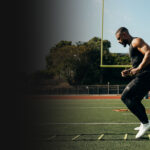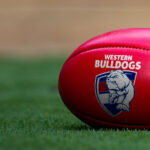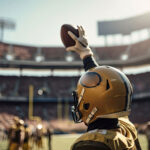It’s no surprise that sleep is an important consideration, not only to athletes, but also to the working individual. The function of sleep for overall health, learning new skills, and recovery has been well established; and a large amount of research has been carried out to investigate the effects of both sleep deprivation and sleep improvement/extension on both physiological and psychological adaptations (1, 2).
The aim of this blog is to consider how sleep is related to injury risk and understand the physiological mechanisms that might be responsible for such an association. We will use examples from both the literature and our own Kitman Labs research which links sleep monitoring back to injury rate. Once this is established, some practical “tips and tricks” are provided to help athletes get the sleep they need!
SLEEP AND INJURY
The accumulation of inappropriately large amounts of stress has been associated with increases in the incidence of injury (3, 4). Therefore, in instances where stress can be reduced this would presumably lower injury occurrence. Inadequate or poor sleep increases stress in all populations, and is therefore a possible mechanism for increasing injury risk. Research has shown that inadequate sleep (<8 hours) resulted in adolescents being 1.7 times more likely to be injured than if sleeping time was >8 hours (5). However, conversely, no relationship was found between poor sleep quantity/quality and injury occurrence in elite level Australian Rules football players (6).
As such, there is certainly a level of ambiguity between sleep and injury within the literature. At Kitman Labs, we’ve noticed that sleep is certainly one metric of importance to many professional sports teams with 68 out of 70 teams having some form of sleep quantification included in their everyday monitoring regime. Using data recorded in the field, we’ve aggregated sleep data from four teams’ as examples to display the relationship between metrics of sleep and injury rate.
Figure 1 Changes in injury rate during training (from contact) compared to the change in sleep quality from the average. Orange bars indicate a substantial effect with % probabilities included at the top and bottom of each bar chart.
Figure 2 Changes in injury rate during games, compared to sleep duration on the previous day compared to a 7 day average. Orange bars indicate a substantial effect with % possibilities included at the top and bottom of each bar chart.
Both quality and quantity of sleep can provide information about the relationship between sleep and injury rate. For example, based on a sample of data from 4 Rugby Union teams gathered over a 3 year period, a decrease in sleep quality from average seems to increase the rate of contact training injuries (Figure 1). As such, players who reported a decrease from their average in sleep quality were 1.73 times more likely to get injured than those who reported stable or increased sleep quality.
In contrast, players reporting high sleep duration also experienced a higher rate of injury during games (Figure 2). It is important to note that critical consideration of sleep data is required. Intuitively, less sleep is presumed more indicative of injury risk, in this case, increased sleep duration may be influenced by other factors such as high training load or illness.
It is now worth taking the time to understand why this might be the case from a physiological and mechanistic standpoint?
MECHANISMS
The physiology of sleep
By beginning to understand some of the fundamentals of sleep physiology, we can ascertain why sleep is important for recovery/regeneration and therefore why there is an association with injury.
Sleep can be broken down into four stages; three of which are known as non-rapid eye movement (NREM, also known as slow wave sleep (SWS)), with the other one being rapid eye movement (REM, see Figure 2). NREM sleep alternates with REM sleep at intervals of about 85-100 minutes, with a normal pattern consisting of 4-5 sleep cycles each night (7).
Figure 3
Both stages of sleep (REM and NREM) have specific functions for our bodies to repair and regenerate (cognitively (REM), and physiologically (NREM)). Although REM is very important, from an athlete perspective there is a surge in growth hormones, and therefore repair, during NREM stages. To achieve optimal recovery, both duration (number of cycles) and quality (SWC) sleep are required. Taking this into account we can begin to understand how a lack of sleep would affect an athlete’s ability to repair and recover from training (due to lack of growth hormone surge), and likely increase the risk of injury.
Sleep quality and training load
One of the reasons sleep is extensively monitored in athletes is due to the likely association between changes in training load and sleep. However, this relationship in the literature is varied with some studies showing extended and improved sleep under heavy training loads (8), and others suggesting sleep disturbances in overtrained athletes (9). In these cases, it is perhaps more likely that increases in injury rates are a result of higher training loads being associated with increases in injury (10), rather than sleep directly affecting injury rate per se.
Injury and general stress
As general stress is associated with injury rate (3,4) and poor/inadequate sleep increases stress, there is very likely a plausible link. Poor sleep (quality and quantity) has been linked with reduced parasympathetic modulation and increases in sympathetic stress when measured via heart rate variability (11). Low levels of HRV may be associated with injury risk (12).
Poor sleep has also been linked with changes in metabolic function, namely altering glucose metabolism and its removal (13). Excessive glucose causes increases in inflammation (14) and such chronic inflammation can therefore increase the likelihood of injury.
“IF YOU DON’T MEASURE IT, YOU CAN’T IMPROVE IT.”
The above quote from Lord Kelvin suggested that if you are unable to quantify something, you will be unable to understand if you’re getting better. As we’ve highlighted that sleep is important, we need to understand ways by which to quantify it. If we’re looking towards interventions to improve sleep in players and athletes, we need to know if the intervention is having an effect. Below are a few hand-picked devices that can both objectively and subjectively quantify sleep:
Questionnaires
Questionnaires are the simplest way to quantify sleep in terms of both quantity and quality. There are many apps designed for athletes that will allow data to be recorded and sent at the click of a button (Kitman Athlete, RESTwise, and Training Peaks). Other ways include verified sleep questionnaires which are often used in clinical settings such as the Pittsburgh Sleep Quality Index (PSQI) (15).
Smartphone sleeping apps
Using the accelerometer in smartphones, we can track sleep quality and quantity quite seamlessly. All that is required is for the phone to be left next to the athletes pillow as they sleep. Some apps even give daily advice based on the sleep score. Some sleep apps include SleepCycle, SleepBot and Sleep Time+.
Advanced actigraphy
The most advanced method of sleep tracking uses actigraphy in wearable devices, such as sleep bands and rings. Such devices must be worn whilst sleeping and are likely the most reliable and valid method of sleep monitoring (16). Companies such as Fatigue Science (Readiband) and Oura (ring) have so far led the way in this space showing good practical application.
Beddit
Lastly, there are devices that track sleep by being situated under a bedsheet. Devices such as Beddit are inserted under the bedsheet on which the athlete lie on whilst sleeping. Such devices can track sleep quality and quantity (giving an efficiency score) and even track heart rate continuously through the night. As there is no need to wear a device whilst sleeping, these can often be a popular choice.
PRACTICAL APPLICATIONS
So, how can we improve sleep? The term “sleep hygiene” has become popular to encapsulate good behaviors before bed. We list some ideal behaviors below to promote a healthy sleeping regime:
- Create a good sleep routine (brush teeth, read etc.), and try to go to bed at the same time every night.
- Avoid caffeine 4-5 hours before bed
- Avoid computers and smartphones 1 hour before bed. A program called “f.lux”, can also be downloaded to computers which adjusts the light on the screen (reducing blue light) in accordance to the time of day.
- Leave the clock out the room. If you can’t sleep, having a clock in the room can make you more anxious accentuating the problem.
- Ensure your bedroom is cool and dark. Some people find earplugs and eye masks useful.
- If you can’t sleep, don’t lie in bed trying to fight it. Get up, have a warm non-caffeinated drink, and return to bed when you’re ready.
- Try simple meditation, like focusing on your breathing, to address restlessness.
- Experiment with napping, which has been shown to improve athletic performance (17).
REFERENCES:
- Leger D, Metlaine A, Choudat D (2005). Insomnia and sleep disruption: relevance for athletic performance. Clin Sports Med. 24(2):269-85, viii.
- Mah CD, Mah KE, Kezirian EJ, Dement WC (2011). The effects of sleep extension on the athletic performance of collegiate basketball players.Sleep.1;34(7):943-50
- Andersen, M.B., and Williams, J. M. (1988) A model of stress and athletic injury: prediction and prevention. Journal of Sport and Exercise Psychology, 10, 294, 306
- Ivarsson A, Johnson U, Andersen MB, Tranaeus U, Stenling A, Lindwall M. (2017) Psychosocial Factors and Sport Injuries: Meta-analyses for Prediction and Prevention. Sports Med. ;47(2):353-365
- Milewski MD, Skaggs DL, Bishop GA, Pace JL, Ibrahim DA, Wren TA, Barzdukas A (2014). Chronic lack of sleep is associated with increased sports injuries in adolescent athletes J Pediatr Orthop.;34(2):129-33
- Dennis J, Dawson B, Heasman J, Rogalski B, Robey E (2016) Sleep patterns and injury occurrence in elite Australian footballers. 2016 Feb;19(2):113-6.
- Izac M (2016) Basic Anatomy and Physiology of Sleep American Journal of Electroneurodiagnostic Technology, 46:1,18-38.
- Winsley R, Matos N (2011). Overtraining and elite young athletes. Med Sport Sci. 2011;56:97-105.
- Thornton HR, Delaney JA, Duthie GM, Dascombe BJ (2017). Effects of Pre-Season Training on the Sleep Characteristics of Professional Rugby League Players. 22:1-23. doi: 10.1123/ijspp.2017-0119. [Epub ahead of print]
- Ball S, Halaki M, Orr R (2016) Training volume and soft tissue injury in professional and non-professional rugby union players: a systematic review. Br J Sports Med pii: bjsports-2015-095926.
- Castro-Diehl C, Diez Roux AV, Redline S, Seeman T, McKinley P, Sloan R, Shea S (2016). Sleep Duration and Quality in Relation to Autonomic Nervous System Measures: The Multi-Ethnic Study of Atherosclerosis (MESA). Sleep. 1;39(11):1927-1940.
- Gisselman AS, Baxter GD, Wright A, Hegedus E, Tumilty S. (2016) Musculoskeletal overuse injuries and heart rate variability: Is there a link? Med Hypotheses. 2016 Feb;87:1-7
- Knutson KL, Spiegel K, Penev P and Cauter EV (2007). The metabolic consequences of sleep deprivation. Sleep Medicine Reviews 11;3: 163–178
- Collier B, Dossett LA, May AK, Diaz JJ (2008). Glucose control and the inflammatory response. Nutr Clin Pract. 23(1):3-15.
- Buysse, D. J., Reynolds, C. F. 3rd, Monk, T. H., Berman, S.R., & Kupfer, D. J. (1989). The Pittsburgh Sleep Quality Index: A new instrument for psychiatric practice and research. Psychiatry Research, 28(2), 193-213
- Van Dongen HPA (2004 Comparison of mathematical model predictions to experimental data of fatigue and performance. Aviat Space Environ Med; 75(3, Suppl.):A15–36.
- Waterhouse, J. G. Atkinson, B. Edwards and T. Reilly (2007). The role of a short nap post-lunch in improving cognitive, motor and sprint performance in participants with partial sleep deprivation. J Sports Sci 25: 1557-66



 More than Equal’s mission is to close the gender gap in motor sports and find and develop the first female Formula 1 world champion. They will now have an advanced operating system to centralize data for female drivers participating in More than Equal’s pioneering Development Programme.
More than Equal’s mission is to close the gender gap in motor sports and find and develop the first female Formula 1 world champion. They will now have an advanced operating system to centralize data for female drivers participating in More than Equal’s pioneering Development Programme.